How to Identify a Northern Mockingbird
Updated: Jul. 25, 2023
See what a northern mockingbird looks like and where to find them. Plus hear a mockingbird call and learn how they mimic other backyard birds.
If you think you’re hearing a blackbird, jay or hawk out the kitchen window, think again! It just might be a northern mockingbird.
What Does a Northern Mockingbird Look Like?
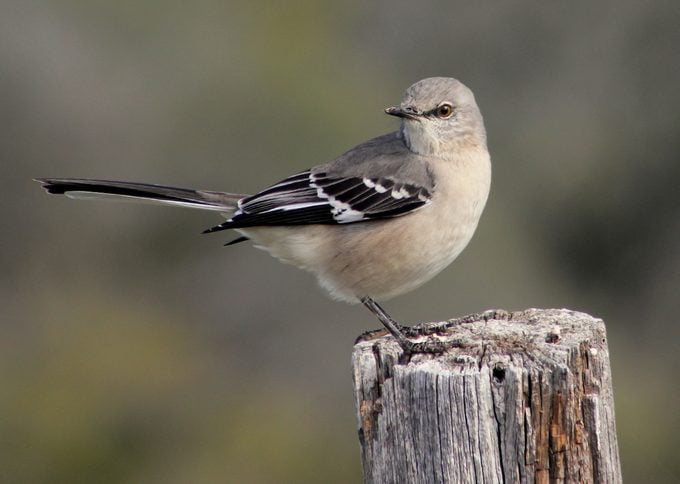
A slender bird about the size of a robin, the northern mockingbird is easy to spot. This species is light gray with white wing bars and a long tail. Males and females are nearly identical.
Northern mockingbirds are quite fun to watch. While on the ground, they will often quickly flash their white wing patches to startle insects.
- Common name: Northern mockingbird
- Scientific Name: Mimus polyglottos
- Family: Mimic thrush
How to Attract Northern Mockingbirds
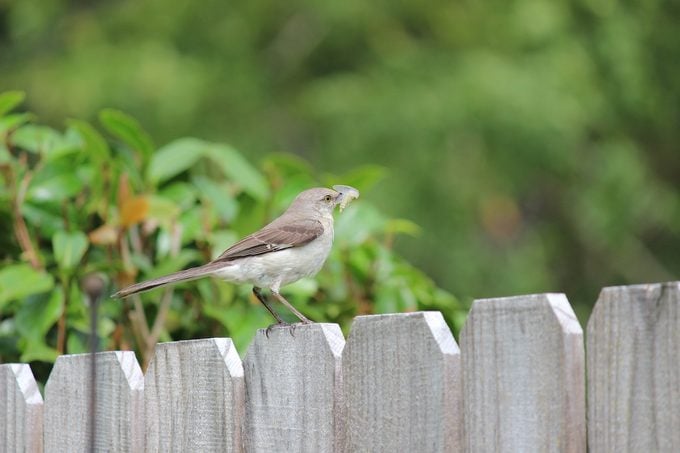
Mockingbirds aren’t often found at feeders, as they prefer insects and small fruits to nuts and seeds. Try setting out raisins or grapes to attract these cuties. To nest, they may create cup nests in dense backyard shrubs. They also splash about in birdbaths that are maintained year-round. And if the water’s moving, that’s even better.
To attract mockingbirds, explore Audubon’s Plants for Birds native plant database for economically friendly ways to incorporate fruits and insects in your backyard.
Habitat and Range Map
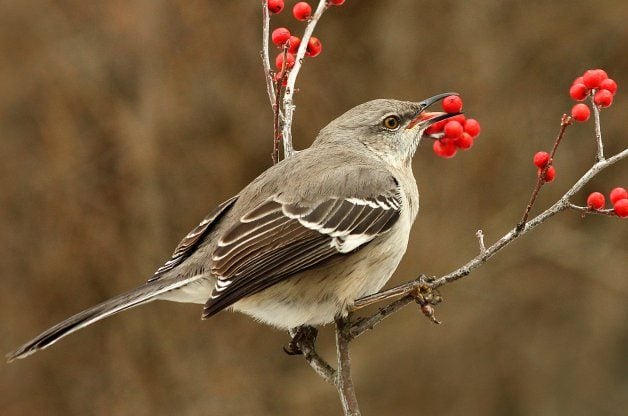
This nonmigratory species can be seen throughout the contiguous United States, although it is only a rare visitor to many areas in the northern U.S. Its range has dramatically extended northward over the past 70 years, partially because of people planting bushes and trees that bear winter fruit. Often in open urban areas and shrublands, these birds hang out at the edge of bushes, close to eye level.
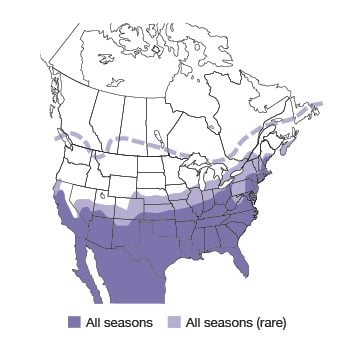
Range maps provided by Kaufman Field Guides, the official field guide of Birds & Blooms.
Northern Mockingbird Call and Sounds
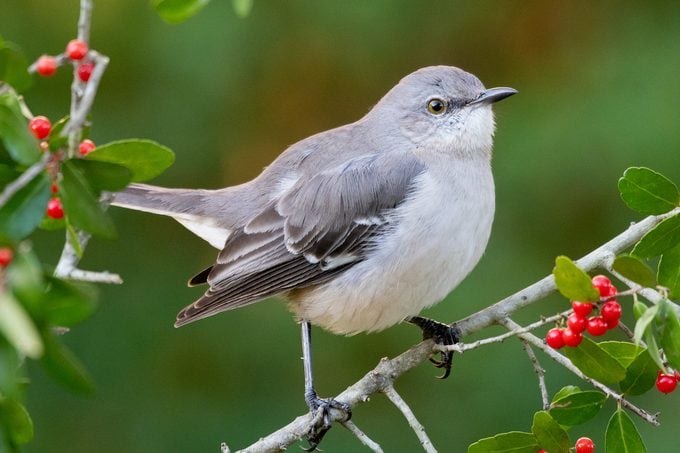
Even if you’ve never seen a northern mockingbird, you’ve probably heard one. Northern mockingbirds have their own call (a loud tchack), but when it comes to their songs, all bets are off.
Bird songs provided by the Cornell Lab of Ornithology.
Meet the most musical songbirds in America.
Remarkable Mimics
The mimicry abilities of these birds are almost unbelievable. “They incorporate songs or sounds of other species that they define as ‘in their territory,’” says Geoff LeBaron, the Christmas Bird Count director for the National Audubon Society. Mockingbirds spout endless strings of songs—often dozens in a row. These birds may do a perfect imitation of another species’ call but will repeat the sound rapidly, up to 10 times in a row, before switching to a different sound and repeating that one.
The primary benefit of their impressive imitation skills is outlining, to other mockingbirds, the boundaries of their turf. “They have song posts in various places around the edge of their territory, and that’s where they go to sing,” says Geoff. They’re known to sing through the day and night, particularly males without a mate. Male songs are prevalent through the breeding season, and females sing as well, though often much more softly.
Learn more about bird mimics and mimicry.
Bold Personality
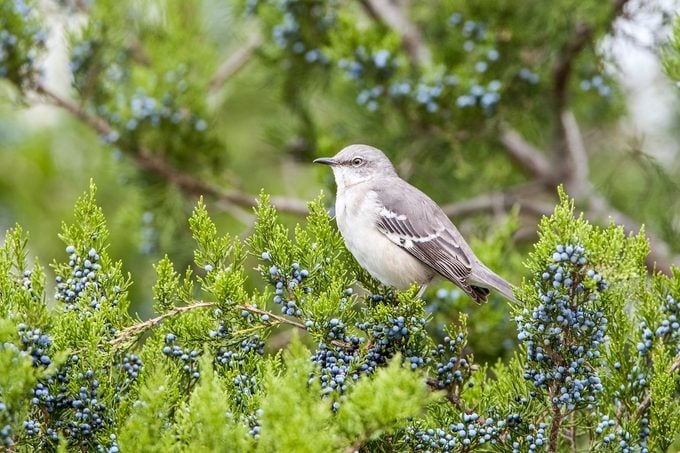
“Mockingbirds have a lot of personality, sometimes too much,” says Geoff with a laugh. “They are not exactly cryptic.” This species can be confrontational with other mockingbirds, birds of similar size, and even with humans or pets that venture too close.
Are hummingbirds territorial at feeders and flowers?
Nest, Eggs and Juvenile Mockingbirds
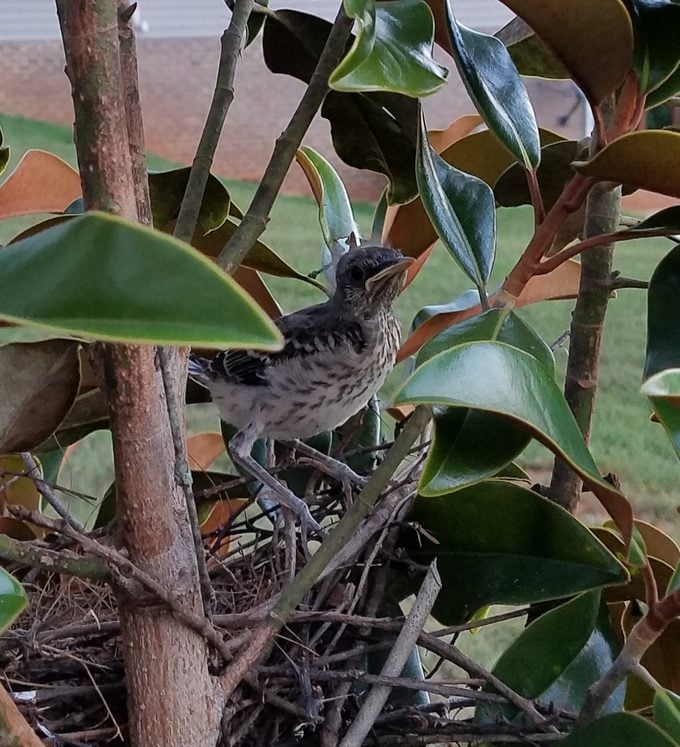
A mockingbird pair builds a cup-shaped nest in the fork of a shrub. The female lays three to six blue or green eggs with brown splotches.
Juveniles look similar to adult birds but they sport specks on their chests.
Next, meet the thrush bird family: sweet songbirds.
